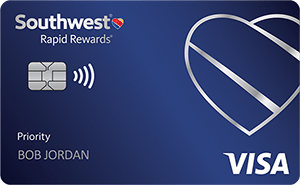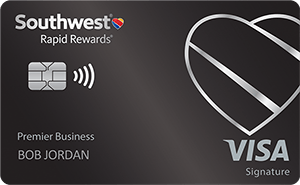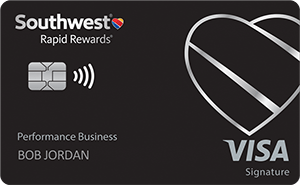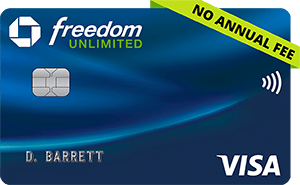The Complete Guide to Southwest Rapid Rewards
Southwest offers many opportunities to earn and redeem Rapid Rewards points. Plus, your points don't expire.
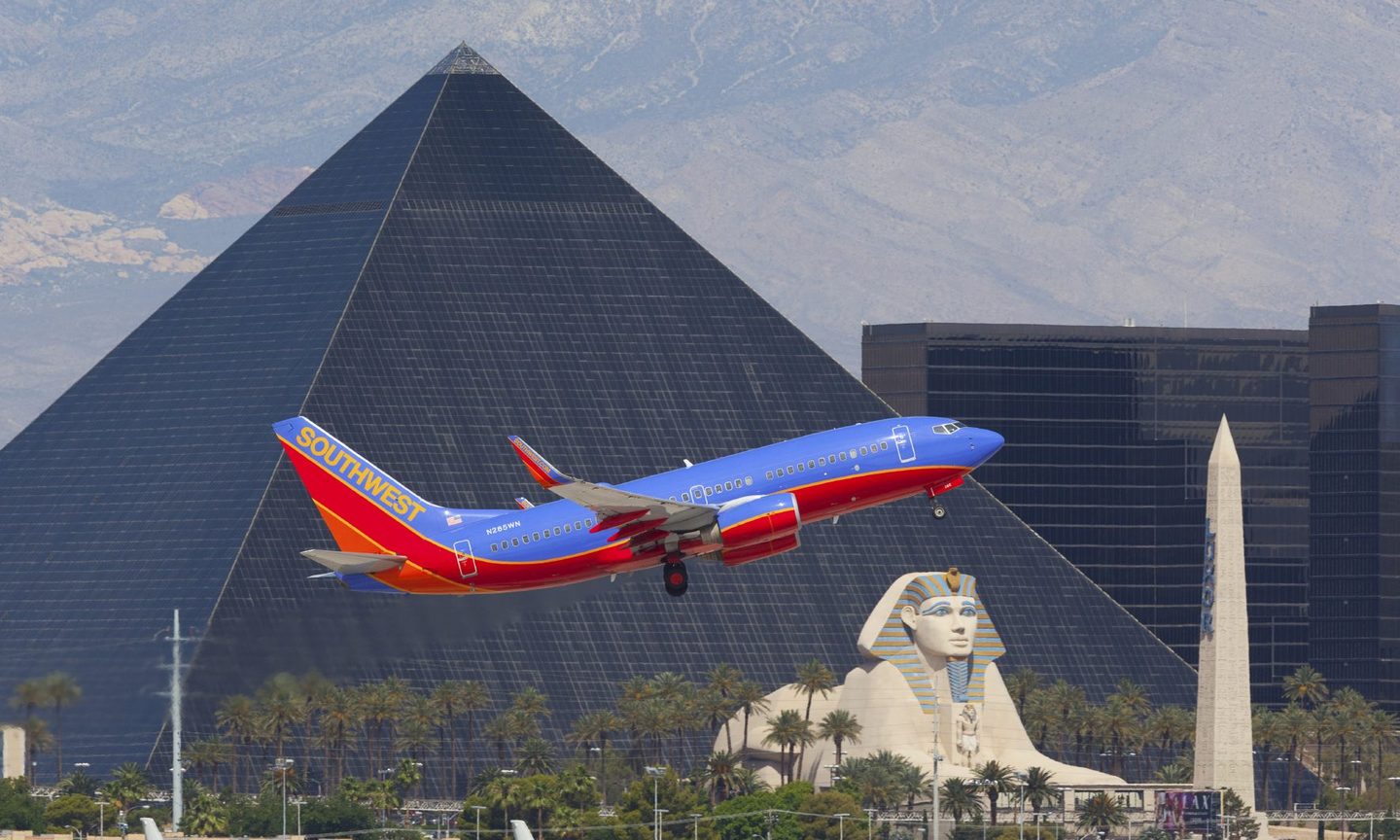
Many or all of the products on this page are from partners who compensate us when you click to or take an action on their website, but this does not influence our evaluations or ratings. Our opinions are our own.
Southwest Airlines' loyalty program is free to join — and you should, since it’s necessary if you want to earn Southwest points to use for future flights.
Southwest points never expire, and the airline can take you to over 100 destinations when you redeem Rapid Rewards for free flights, including Hawaii, Mexico, the Caribbean and Central America.
Here’s what you need to know about Southwest Rapid Rewards.
On this page
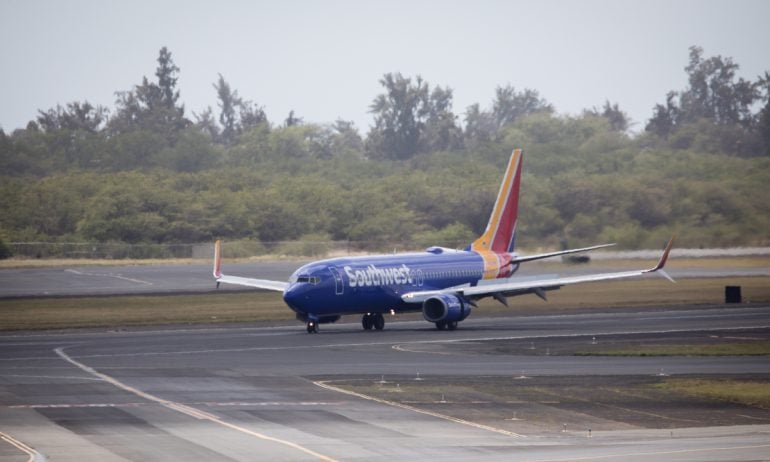
Southwest Rapid Rewards sign-up
You’ll need to sign up for a Southwest Rapid Rewards account to earn Southwest points. It’s free to join and only takes a few minutes.
How much are Southwest points worth?
Current Southwest rewards value
Based on our most recent analysis of actual award flight redemptions, NerdWallet values Southwest Rapid Rewards points at 1.3 cents apiece.
Previously, Southwest offered the same redemption value across all bookings. But in 2025, it implemented dynamic pricing for awards. This means it's possible to get more than 1.3 cents per point on certain routes — but in other cases, you might get less.
» Learn more: What is the value of Southwest Rapid Rewards points?
Win Private Travel 'AMA' ($250 value)
Get the ‘cheat codes’ to using travel points and miles so you can spend less cash. 📥 Sign up for our free newsletter before Jan. 4 and enter to win a 1:1 travel rewards coaching session.
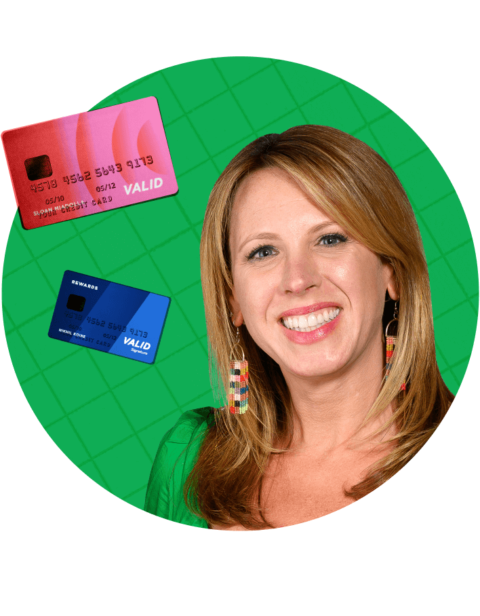
How to earn Southwest points
There are multiple ways to earn Southwest Rapid Rewards, including:
- Flying on Southwest.
- Spending on a Southwest credit card.
- Transferring Chase Ultimate Rewards® or Diners Club Rewards to Southwest.
- Making purchases with non-airline partners.
Having multiple ways to earn Southwest rewards makes it relatively easy to grow your rewards account for future redemptions.
» Learn more: Ways to earn Southwest points
Earning Southwest Rapid Rewards points when you fly
The number of points you earn for a flight depends on the price of the ticket, the fare class and your status level within the Rapid Rewards program.
| Southwest fare type | Benefits |
|---|---|
| Basic (formerly Wanna Get Away). |
|
| Choice (formerly Wanna Get Away Plus). |
|
| Choice Preferred (formerly Anytime). |
|
| Choice Extra (formerly Business select). |
|
Earning Rapid Rewards points with a Southwest credit card
The fastest way to stack Southwest Rapid Rewards points is by earning the welcome offer on a Southwest credit card. You’ll also earn extra rewards on purchases with Southwest and in other bonus categories, depending on the card you have.
Points earned from the welcome bonus on a Southwest credit card can help you qualify for a Companion Pass, which requires earning 135,000 qualifying points in a calendar year (sign-up bonuses and points earned from credit card spend count). Once those requirements are met, you’ll earn a free Companion Pass (plus taxes and fees) for the rest of that year and the entire following calendar year.
Southwest consumer cards
Annual fee
$229.
$99.
Benefits
• When available, Standard or Preferred seat selection at time of booking for the cardholder and up to eight passengers on the same reservation for flights operating in 2026.
• Free checked bag for cardholder and up to eight additional passengers on the same reservation.
• 7,500-point anniversary bonus each year.
• 25% back on in-flight purchases.
• 2,500 TQPs toward A-List status for every $5,000 you spend.
• When available, standard seat selection within 48 hours prior to departure for the cardholder and up to eight passengers on the same reservation for flights operating in 2026.
• Free checked bag for cardholder and up to eight additional passengers on the same reservation.
• 3,000-point anniversary bonus each year.
• 25% back on in-flight purchases.
Learn more
If you own a business, you may qualify for a Southwest business credit card, which can sometimes be even more rewarding than a consumer credit card.
Southwest business cards
Southwest® Rapid Rewards® Performance Business Credit Card
Annual fee
Southwest® Rapid Rewards® Premier Business Credit Card
$149
Southwest® Rapid Rewards® Performance Business Credit Card
$299
Benefits
Southwest® Rapid Rewards® Premier Business Credit Card
- Standard or Preferred seat selection within 48 hours prior to departure, when available.
- Upgrade to Extra Legroom seat within 48 hours prior to departure, when available.
- First checked bag free for the cardholder and up to 8 companions on the same reservation.
- 6,000 anniversary points each year.
- 15% flight discount promo code each year (excludes Basic fares).
- 3X points on Southwest purchases.
- 2X points on gas stations and restaurants (up to $8,000 in combined purchases per year).
- 1X points on all other purchases.
- 2,000 Tier Qualifying Points (TQPs) toward A-List status for every $5,000 spent annually.
- Boarding: Group 5.
Southwest® Rapid Rewards® Performance Business Credit Card
- Preferred seat selection at booking when available (starting 2026).
- Standard or Preferred seat selection within 48 hours prior to departure, when available.
- Upgrade to Extra Legroom seat within 48 hours prior to departure, when available.
- First checked bag free for the cardholder and up to 8 companions on the same reservation.
- 9,000 anniversary points each year.
- 4X points on Southwest purchases.
- 2X points on gas stations and restaurants.
- 2X points on hotel accommodations booked directly with the hotel.
- 2X points on local transit and commuting, including rideshare.
- 1X points on all other purchases.
- 2,500 Tier Qualifying Points (TQPs) toward A-List status for every $5,000 spent annually.
- Boarding: Group 5.
Note that all Southwest credit cards are issued by Chase and are subject to Chase’s 5/24 rule, where you won’t be approved for a new Chase credit card if you’ve been approved for five or more cards in the past 24 months.
Before you jump in, here are the things to know before getting a Southwest card.
🤓 Nerdy Tip
Save a note in your phone showing which credit cards earn bonus points in specific categories, so you can maximize the number of points you earn from everyday purchases. And spend only what you can afford to pay back each month. » Learn more: Is a Southwest credit card worth it?
Transferring credit card points to Southwest Airlines points
Points from two credit card rewards programs can transfer to Southwest Airlines points: Chase Ultimate Rewards® and Diners Club Rewards. Those partnerships allow you to transfer rewards earned in those programs to Southwest Airlines Rapid Rewards points at the following ratio:
- Chase Ultimate Rewards® transfer to Rapid Rewards at a 1:1 ratio (1,000 Chase UR = 1,000 Rapid Rewards). You must transfer a minimum of 1,000 points.
- Diners Club Rewards transfer at a 1.5:1.2 ratio (1,000 Diners Club Rewards = 800 Rapid Rewards).
Transfers from Chase and Diners Club are usually instantaneous, though Chase says they can take up to one week to process.
Earning Rapid Rewards through partners
You can earn Rapid Rewards points by making purchases at partner stores, restaurants, hotels and car rental agencies.
- Hotels: You can earn Rapid Rewards points by staying at partner hotel chains, including Hyatt and Marriott. Terms and conditions and earnings rates vary based on brand.
- Car rentals: Southwest partners with a handful of car rental agencies. Terms and conditions and earnings rates vary based on brand.
- Shopping and dining: Earn points at more than 800 retailers when you shop through the Southwest Rapid Rewards Shopping portal. Meanwhile, the Southwest Rapid Rewards Dining program allows you to earn up to 3 points per $1 spent at participating restaurants, plus bonus points for submitting restaurant reviews.
- Switching electricity providers: Members in some states can also earn a sign-up bonus and ongoing bonuses when they switch their power service to NRG Home or Reliant. Check the Rapid Rewards website to see if your home is eligible.
- Making rent payments: Members who join Bilt, set up rent payments, and link their Southwest Rapid Rewards account in the Bilt app can convert a minimum of 1,000 Bilt points at a time. Blue Status Bilt members must convert at least 2,000 Bilt points to Rapid Rewards points.
- Taking surveys: Participate in market research and earn points when you share your opinion via the e-Rewards and Rewards For Opinions platforms.
- Enroll in travel medical insurance: Southwest Rapid Rewards members who enroll in Emergency Assistance Plus can earn 1,500 points at sign up and during annual renewal, plus 500 points for each add-on.
You can also transfer points from partner rental car and hotel loyalty programs to Rapid Rewards. The exchange rate is generally pretty bad, so we don't often recommend this. However, it could be a way to top off your account balance for an upcoming redemption.
Buying Southwest Rapid Rewards points
Generally, you can buy Rapid Rewards points at a rate of 1.5 to 3 cents each, but buying points at these prices is usually a bad deal. You'd be hard-pressed to redeem these points for 3 cents apiece.
That being said, buying Southwest points can still make sense in a few scenarios, like:
- When you're traveling with the Southwest Companion Pass. When you hold the Companion Pass, your designated companion can travel for free whenever you fly. This effectively doubles the value of your points, which makes it more attractive to buy Southwest points when you can buy them at a good price.
- During a bonus points promotion. Southwest holds regular bonus promotions where you will receive extra points on your purchase. These promotions can substantially increase the number of points you receive, which reduces the overall cost per point.
- When you don’t have Chase Ultimate Rewards® or Marriott points. Southwest is a transfer partner of both of these programs (more on this below).
» Learn more: When it makes sense to buy airline miles
Transferring Southwest points to another person
You can transfer Rapid Rewards points from your account to another member’s account. But we don’t recommend this, as Southwest charges a hefty fee that amounts to $5 for every 500 points transferred.
A better option would be to book a reservation for someone else using your account and having them reimburse you.
Southwest Companion Pass
The Southwest Companion Pass is effectively a buy-one-get-one deal on your Southwest flight. Every time you buy a ticket or redeem points for a free flight, you can choose a companion to fly with you for free (plus the cost of taxes and fees). There is no limit to the number of flights you can bring a companion, making it among the most valuable benefits of its kind.
To qualify for a Southwest Companion Pass, you'll need to do one of the following:
- Fly 100 qualifying one-way flights in a calendar year.
- Earn 135,000 Rapid Rewards points in a calendar year. Qualifying points include those that you earn through revenue flights booked via Southwest; those that you earn on Southwest credit cards; and base points you earn from Rapid Rewards partners.
If you meet either of those criteria, you'll earn the Companion Pass for the rest of the year in which you qualified and the following calendar year. So if you earn the Companion Pass in, say, July 2026, it will be valid through the end of December 2027. You'll need to re-qualify every year to hold on to your status.
The quickest way to amass a pile of points is by earning the sign-up bonus on a Southwest-branded card.
🤓 Nerdy Tip
If you can time it so you qualify for the pass in January, you'll essentially be getting two-for-one tickets for nearly two years. That could add up to some serious savings. » Learn more: Things to know before flying Southwest
Do Southwest points expire?
No, Southwest Rapid Rewards points don’t expire, which is especially helpful for travelers who don’t fly Southwest often. However, if you close your Southwest account, you will lose your points.
How to maximize your rewards
You want a travel credit card that prioritizes what’s important to you. Here are some of the best travel credit cards of 2026:
- Flexibility, point transfers and a large bonus: Chase Sapphire Preferred® Card
- No annual fee: Wells Fargo Autograph® Card
- Flat-rate travel rewards: Capital One Venture Rewards Credit Card
- Bonus travel rewards and high-end perks: Chase Sapphire Reserve®
- Luxury perks: American Express Platinum Card®
- Business travelers: Ink Business Preferred® Credit Card
Article sources
NerdWallet writers are subject matter authorities who use primary,
trustworthy sources to inform their work, including peer-reviewed
studies, government websites, academic research and interviews with
industry experts. All content is fact-checked for accuracy, timeliness
and relevance. You can learn more about NerdWallet's high
standards for journalism by reading our
editorial guidelines.
Travel Cards from our Partners
Chase Sapphire Preferred® Card
Rewards rate 1x-5x Points
Intro offer 75,000 Points
Chase Freedom Unlimited®
Rewards rate 1.5%-5% Cashback
Intro offer $300
Capital One Venture Rewards Credit Card
Rewards rate 2x-5x Miles
Intro offer 75,000 Miles
More like this
Related articles


